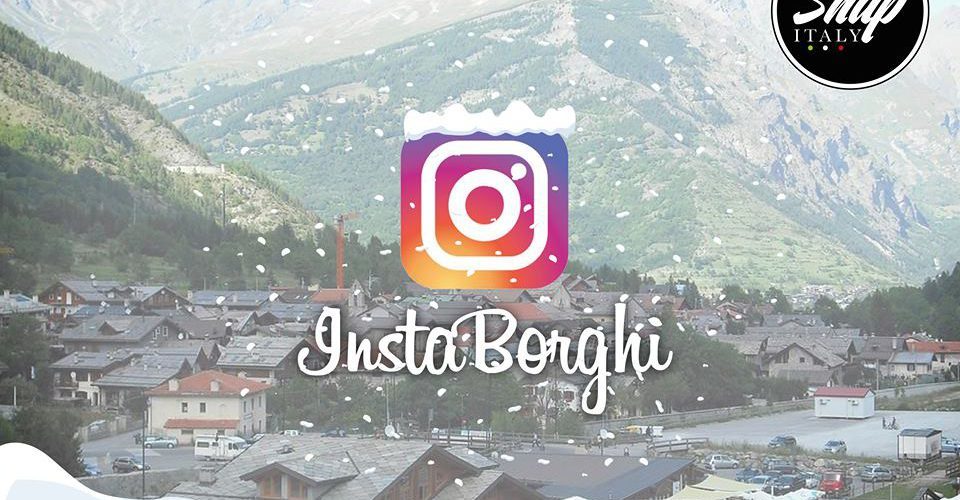Instaborghi: Bardonecchia, Italy seen from the borders
READ ME IN  Italiano
Italiano
«A border-land, where Italian is Occitan, Bardonecchia, Italy, is the weekly protagonist of Instaborghi. Between the cold of the Alps and the warmth of Piedmontese wines, let us dive into it!»
1312 meters of altitude, Bardonecchia (official tourist site) is the stage of a natural theater of marvelous and high peaks. Welcome to Piedmont, where winter does not go unnoticed but does not affect the sobriety of the Piedmontese. We are among the valleys of Rochemolles, Frejus, Rho and Mezelet, a small paradise – of course – for sports and mountain lovers. Instaborghi continues its winter journey (here you can find the other episodes) to introduce you to these small Italian wonders, to be found at every latitude.
What to see in Bardonecchia, Italy
Bardonecchia really is a little gem: the nucleus of the village is the Borgovecchio, which tightens its nucleus around the small Parish Church of St. Hippolytus, whose characteristic is to have two bell towers, one from the 19th century and the other, more ancient, in Romanesque style. The historic center has been redeveloped, while maintaining its intrinsic characteristics, and is the heart of shopping and restaurants, overlooking the main road, with limited traffic. On the square in front of the church, the Civic Museum collects all the testimonies of the local culture, which has always been closely linked to agriculture and pastoralism, before tourism transformed Bardonecchia into one of the most sought-after locations in the Piedmont winter. La Tur d’Amun is what remains of the ancient tower of the Castle of the Lords of Bardonecchia, a 15th century building. From the center of the village you can easily venture for beautiful walks in the two valleys of Frejus and Rho, which you can travel through by bike or on horseback.
What to do in Bardonecchia, Italy
The center of the village, as well as the station, is not far from the equipped sports areas of Bardonecchia, also connected by urban transport. The ski area includes 17 km of cross-country trails and 10 km of snowshoe and snowshoe trails, while the Colomion – Les Arnaud-Mezelet ski resort provides 15 lifts, up to 2,400 meters of altitude. Bardonecchia is the Olympic Municipality (for the 2006 Winter Olympics), it has hosted the snowboard competitions and an Olympic village. You are spoiled for choice in terms of winter sports but also for sports at other times of the year, including horseback riding, biking, golf, swimming pools, skating, tennis; there is everything! Lastly, a small weekly market takes place every Thursday morning in Borgovecchio, amidst the swarming of local craft shops and antiques.
What to eat in Bardonecchia, Italy
Here the flavours you will find are exposed to the French and Haute-Savoie influence; being in a border area and thus culinary traditions of Piedmont here take on international nuances. Plunge without pity on the Cajettes, potato gnocchi, nettles, onion and rye flour, au gratin, a real treat. La Grissa is a soup with smoked bacon, cheese, egg and breadsticks crumbled in broth, while you will feel a certain French influence in the Soupe Grass, broth with black bread, onions and cheeses, or even the Fave Franche, a puree of beans, chestnuts and potatoes, just to keep it light. We are still in Piedmont, so let’s not forget the wines: here in the area there are some great quality reds, such as Becouet and Valsusa doc
A little curiosity
Bardonecchia, Italy, is located in Occitania, an area without apparent borders, known for being the homeland of the lengo d’oc of the troubadours of the Middle Ages. Here the spoken word is a panacea understandable even immediately across the border and not only, and the same accent is also found at the foot of the Pyrenees and towards the Atlantic. Occitan culture is still very present on the territory and it is found in patronal festivals, in habits and in the kitchen.
Carolina Attanasio
READ ME IN  Italiano
Italiano


